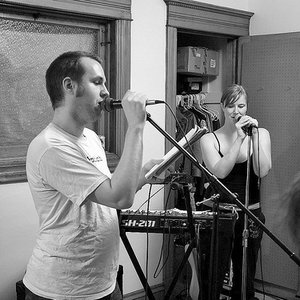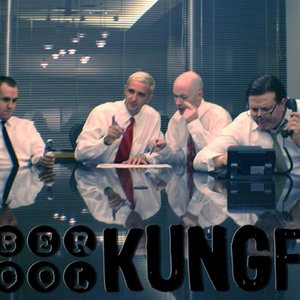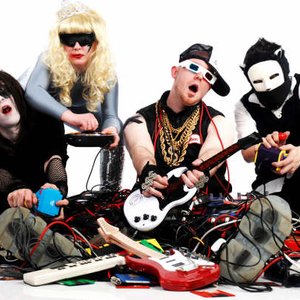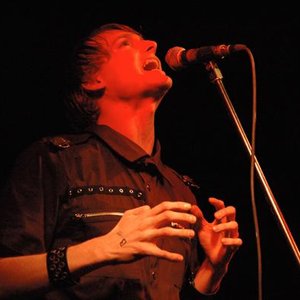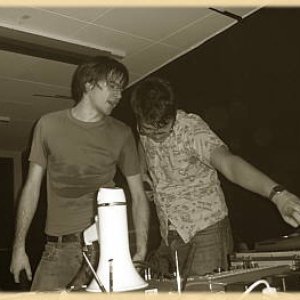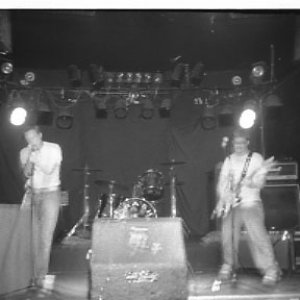Biography
If we were telling the polished and whimsical Reader’s Digest version of alternative-rock-electronica powerhouse Stellar Vector’s rise on the Minneapolis indie scene, it would start with founding members Charles Sadler (vocals, keyboards) and Jonathan Ford (rhythm guitar) playing together for the first time at First Avenue—a venue Prince has played many times and used as a principal locale for Purple Rain. It would include the release of their song “Agoraphobia” on the Electro Punk 2 compilation and then cut to the present, with the band at last releasing their debut full length album A Flock of Cowards after two well received EPs, Not In A Parallel Universe, Either and You’re Not Included.
Yet that cleanly written history would leave out the much more fascinating joys and struggles, the highs and lows and ultimate triumphs, of a group whose vibe has truly been the product of a dynamic creative evolution. The five-piece Stellar Vector now describes itself as a “post modern rock band that draws heavily from various neo-prog and post-punk influences (Peter Gabriel, David Bowie, Peter Murphy, Buzzcocks, etc.) and makes heavy use of synthesizers. But in the early 2000s, Sadler and Ford—who met while gigging together at the Fireball in St. Paul when Sadler was with Little Tin Box and Ford was performing as Dissociate–actually started out with a completely different sound as a solo synth-pop project called {space bar}.
The original lineup of {space bar} played its first gig in the First Avenue Main Room in 2004 and later recorded a three song demo with producer Ev Olcott (12 Rods/Halloween, Alaska/Dot Dot Dot). But after Charles penned “Agoraphobia,” which also appeared on Not In A Parallel Universe, Either, the band—which they rechristened Stellar Vector–shifted from its developing angsty vibe to more progressive rock (a la old Genesis, Gabriel and Bowie). Along the road, there were a series of key personnel changes, but all the comings and goings have led to Sadler and Ford’s remarkable chemistry with their current live and recording lineup: Kevin Hahn (lead guitar), Stephan Ahonen (drums) and Mike Johnson (bass). Currently expanding beyond their status of Twin Cities local phenomenon, Stellar Vector has held court at some of the region’s top venues over the past few years, including The Varsity Theatre and the Triple Rock Social Club.
Charles says that his original aim in starting the writing process for the collaborations which grew into A Flock of Cowards was to create a “retro album.” He continues, “We started with the idea of doing a Duran Duran-Fixx type pop-guitar record, and maybe by accident developed a sound more natural, comfortable and better reflective of who we are. We’re all comfortable in our own skins musically and not trying to hop on any trend. A Flock of Cowards doesn’t paint a continuous story but it’s more a collection of short stories derived from moment in my life when I acted cowardly and I noticed that other people around me acted out of fear more than anything else. So I’m calling such people cowards in a gentle way.” Jonathan adds: “Even if we are dealing with the themes of fear and cowards, the songs end up being positive. It’s a heavy album but not without its irony and sarcasm.”
The founding duo of Stellar Vector has a unique approach to songwriting, starting with Charles coming up with the storyline and charting chords on the piano or creating a “synth line” backbone and demo’ing it. Then Jonathan will add his guitar lines and they’ll bring in the rest of the band to flesh out the arrangements. A Flock Of Cowards opens with the fiery and aggressive “Buffalo Jump,” one of the album’s heavier songs whose title comes from a term for the process by which Indians would kill herds of Buffalo by lighting a fire in the brush; this is a metaphor for a crowd of people all going along with a fearful mentality, while one person speaks out against it but is trampled by the herd mentality.
“Titanic Work Ethic” has a coolly bombastic intro that gives way to a minimalist traditional piano rock flow; it’s about the drudgery and monotony of the everyday grind. The lighter hearted, hypnotic uptempo 80s vibe of “The Flock” might remind listeners of the band the album title riffs off of, A Flock of Seagulls. Its lyrics are about a person frustrated over a gaggle of people making fun of him, while one fair weather friend treats him differently one on one than when the crowd is around.
Charles says, “My favorite part of making this music is what I call ‘the reveal,’ when we reveal a finished song to our fans for the first time and see what kind of reaction we get. There’s just something exhilarating about that moment, where anticipation gives way to a genuine communication between us and our audience.” Jonathan adds, “I love the process by which a song progresses from its raw beginnings to a fully produced work that we can be proud of. Often when we hear the final track, it’s not at all what we once imagined in our heads, but that’s part of the excitement of making music—and really what the evolution of the Stellar Vector sound is all about.”
Artist descriptions on Last.fm are editable by everyone. Feel free to contribute!
All user-contributed text on this page is available under the Creative Commons Attribution-ShareAlike License; additional terms may apply.

